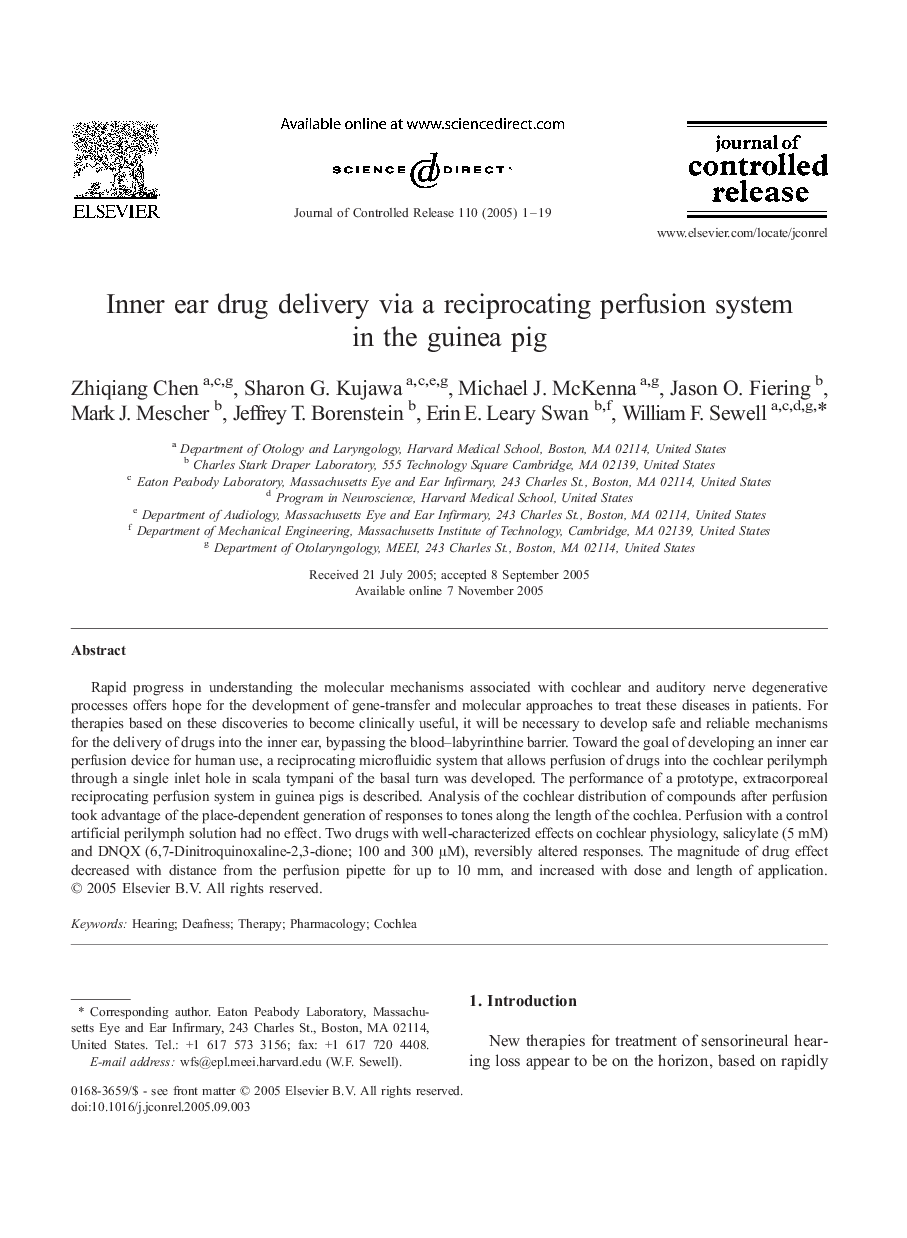| Article ID | Journal | Published Year | Pages | File Type |
|---|---|---|---|---|
| 10613299 | Journal of Controlled Release | 2005 | 19 Pages |
Abstract
Rapid progress in understanding the molecular mechanisms associated with cochlear and auditory nerve degenerative processes offers hope for the development of gene-transfer and molecular approaches to treat these diseases in patients. For therapies based on these discoveries to become clinically useful, it will be necessary to develop safe and reliable mechanisms for the delivery of drugs into the inner ear, bypassing the blood-labyrinthine barrier. Toward the goal of developing an inner ear perfusion device for human use, a reciprocating microfluidic system that allows perfusion of drugs into the cochlear perilymph through a single inlet hole in scala tympani of the basal turn was developed. The performance of a prototype, extracorporeal reciprocating perfusion system in guinea pigs is described. Analysis of the cochlear distribution of compounds after perfusion took advantage of the place-dependent generation of responses to tones along the length of the cochlea. Perfusion with a control artificial perilymph solution had no effect. Two drugs with well-characterized effects on cochlear physiology, salicylate (5 mM) and DNQX (6,7-Dinitroquinoxaline-2,3-dione; 100 and 300 μM), reversibly altered responses. The magnitude of drug effect decreased with distance from the perfusion pipette for up to 10 mm, and increased with dose and length of application.
Related Topics
Physical Sciences and Engineering
Materials Science
Biomaterials
Authors
Zhiqiang Chen, Sharon G. Kujawa, Michael J. McKenna, Jason O. Fiering, Mark J. Mescher, Jeffrey T. Borenstein, Erin E. Leary Swan, William F. Sewell,
